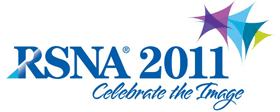
Abstract Archives of the RSNA, 2011
LL-ROS-MO3A
Toxicity and Efficacy of Three Dose-fractionation Regimens of Intensity-modulated Radiotherapy for Localized Prostate Cancer
Scientific Informal (Poster) Presentations
Presented on November 28, 2011
Presented as part of LL-ROS-MO: Radiation Oncology/Radiobiology
Yoshihiko Manabe, Presenter: Nothing to Disclose
Yuta Shibamoto MD, PhD, Abstract Co-Author: Nothing to Disclose
Chikao Sugie, Abstract Co-Author: Nothing to Disclose
Shiho Ayakawa MD, Abstract Co-Author: Nothing to Disclose
Aiko Nagai MD, Abstract Co-Author: Nothing to Disclose
Mitsuru Takeuchi MD, Abstract Co-Author: Nothing to Disclose
Fumiya Baba MD, Abstract Co-Author: Nothing to Disclose
Shinya Takemoto, Abstract Co-Author: Nothing to Disclose
Purpose/Objective(s):To evaluate clinical outcomes of three protocols of intensity-modulated radiotherapy (IMRT) for localized prostate cancer.Materials/Methods:Between January 2005 and July 2010, 204 patients were treated with a 5-field IMRT technique. Dose-fractionation protocols have been revised twice. First, consecutive 79 patients were treated with a daily fraction of 2.0 Gy to a total of 74 Gy (low risk) or 78 Gy (intermediate or high risk). Then, 104 patients were treated with a 2.1-Gy daily fraction to 73.5 or 77.7 Gy. More recently, 22 patients have been treated with a 2.2-Gy fraction to 72.6 or 74.8 Gy. These total doses were equivalent in terms of biological effective dose, assuming an alpha/beta ratio of 2 Gy. The median age and follow-up period were, respectively, 68 years (range: 54-80) and 50 months (range: 22-70) in the 2.0-Gy group, 70 years (55-80) and 22 months (8-38) in the 2.1-Gy group, and 71 years (61-79) and 7 months (4-11) in the 2.2-Gy group. Patients were classified according to the Jewett staging system and the D’Amico risk categories. Neoadjuvant androgen deprivation therapy was given to intermediate- or high-risk patients (88% of all patients). Adjuvant androgen deprivation therapy was also given to about a half of high-risk patients (31% of all patients). Androgen deprivation therapy was reused for patients with prostate-specific antigen (PSA) failure (7.4% of all patients). Overall survival rates, PSA-failure-free survival (PSA-FFS) rates and cumulative incidences of > grade 2 genitourinary (GU) and gastrointestinal (GI) toxicity were calculated by Kaplan-Meier method, and differences between groups were examined by logrank test. PSA failure was defined according to the Phoenix consensus definition. Toxicities were evaluated with the Common Terminology Criteria for Adverse Events version 4.0.Results:Overall survival and PSA-FFS rates were 95% and 89%, respectively, at 5 years for the 2.0-Gy group, and 100% and 92%, respectively, at 3 years for the 2.1-Gy group. PSA-FFS rate for stage C patients of all dose groups was 71% at 5 years, while that for stage B patients of any risk was 95% (p < 0.05). Cumulative incidence of > grade 2 GU toxicity was 8% at 5 years for the 2.0-Gy group and 27% at 3 years for the 2.1-Gy group (p < 0.05). There was no significant deference in cumulative incidence of > grade 2 GI toxicity (12% at 5 years for the 2.0-Gy group). Two patients had grade 3 GI toxicity and one had grade 4 GI toxicity. There were no significant differences in the incidence of GI toxicity due to presence of diabetes mellitus or use of anticoagulants.Conclusions:So far, tumor control was good in all dose-fractionation groups, suggesting that stepwise shortening of treatment periods has been successful.
Manabe, Y,
Shibamoto, Y,
Sugie, C,
Ayakawa, S,
Nagai, A,
Takeuchi, M,
Baba, F,
Takemoto, S,
Toxicity and Efficacy of Three Dose-fractionation Regimens of Intensity-modulated Radiotherapy for Localized Prostate Cancer. Radiological Society of North America 2011 Scientific Assembly and Annual Meeting, November 26 - December 2, 2011 ,Chicago IL.
http://archive.rsna.org/2011/11034670.html

